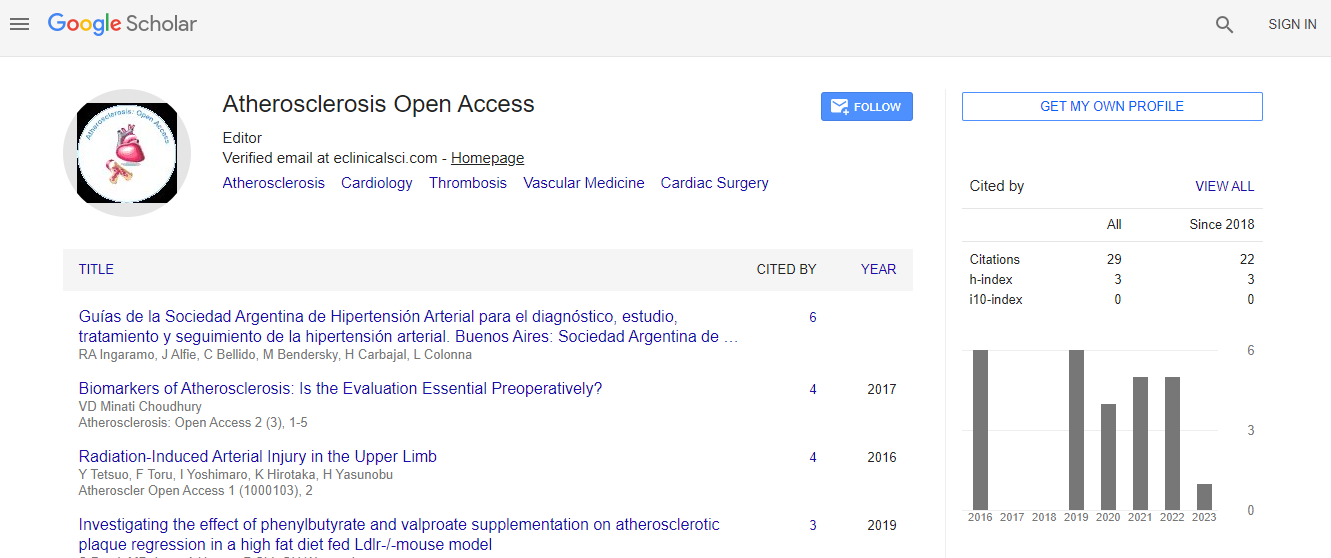Mechanisms of Endothelial Dysfunction in Obesity: A Mini-Review
*Corresponding Author: Sabariah Md Noor, Department of Pathology , Faculty of Medicine and Health Sciences Universiti Putra Malaysia (UPM), Selangor 43400, Malaysia, Email: md_sabariah@upm.edu.my, nanamarye2009@gmail.comReceived Date: Jun 05, 2020 / Accepted Date: Jun 19, 2020 / Published Date: Jun 26, 2020
Citation: Kwaifa IK, Bahari H, Yong YK, Noor SM (2020) Mechanisms of Endothelial Dysfunction in Obesity: A Mini-Review. Atheroscler Open Access 5: 131.
Copyright: © 2020 Kwaifa IK, et al. This is an open-access article distributed under the terms of the Creative Commons Attribution License, which permits unrestricted use, distribution, and reproduction in any medium, provided the original author and source are credited.
Abstract
Obesity is associated with excess accumulation of macronutrients on the adipose tissue, can facilitate the synthesis and secretion of inflammatory biomarkers. Inflammatory markers in turn suppress the secretion of adiponectin and initiate the proinflammatory state. Endothelial cells synthesise bioactive substances that maintain the integrity of the blood vessels through constant regulation between pro-inflammatory and anti-inflammatory, proliferative and anti-proliferative markers of vascular smooth muscle cells. They also maintain the balance between the oxidants and antioxidative substances, vasodilators and vasoconstrictors of the endothelium, coagulation and fibrinolytic systems. However, during obesity, these delicate metabolic balances are altered, which may have great influence on endothelium, a condition characterized by atherosclerotic plaque formation. Endothelial dysfunction forms the basis of this discussion since it was recognized to be the major contributor of cardiovascular complications during obesity. Modification of the inflammatory markers and control of obesity will help to alleviate obesity-related complications linked to cardiovascular diseases.

 Spanish
Spanish  Chinese
Chinese  Russian
Russian  German
German  French
French  Japanese
Japanese  Portuguese
Portuguese  Hindi
Hindi 
